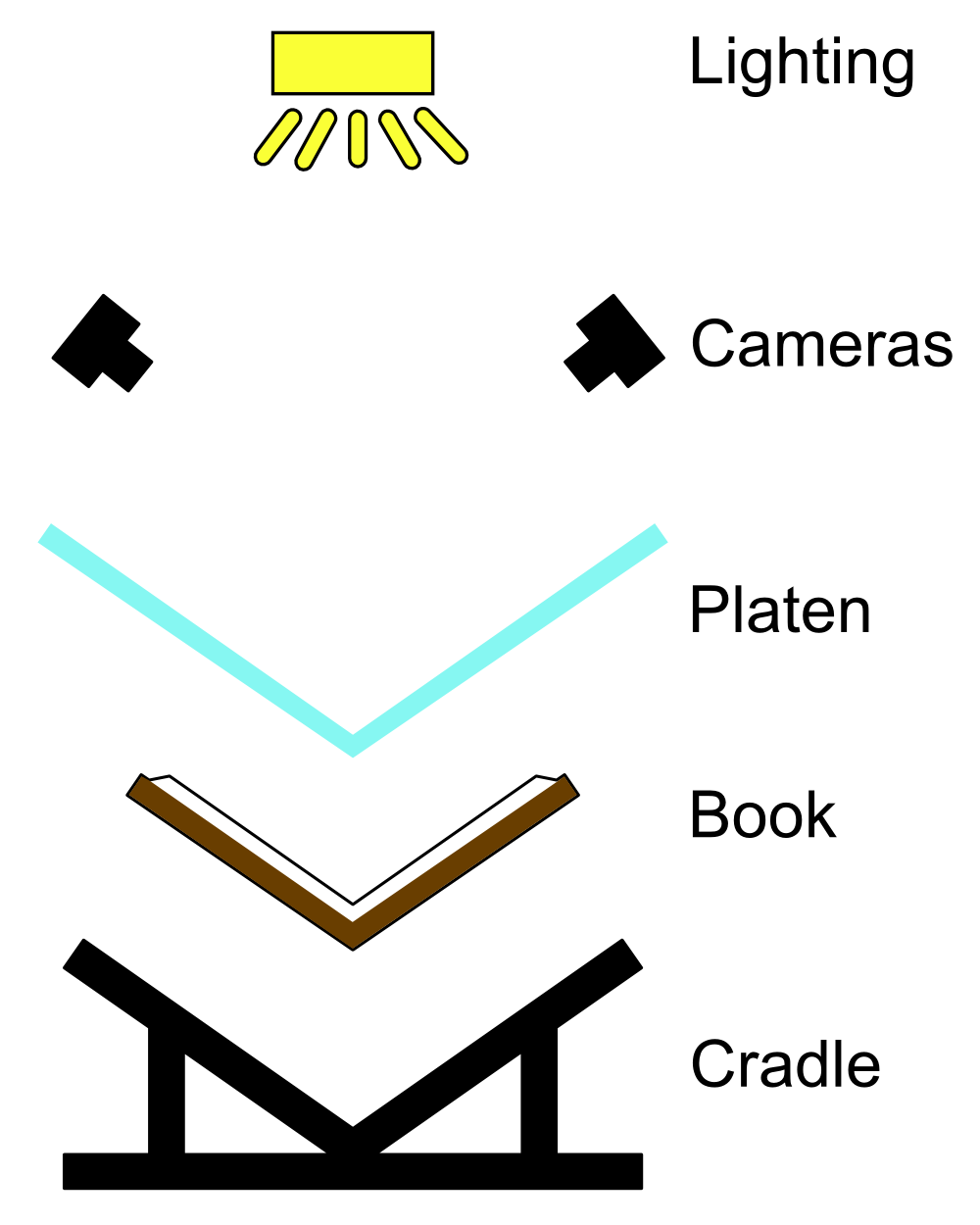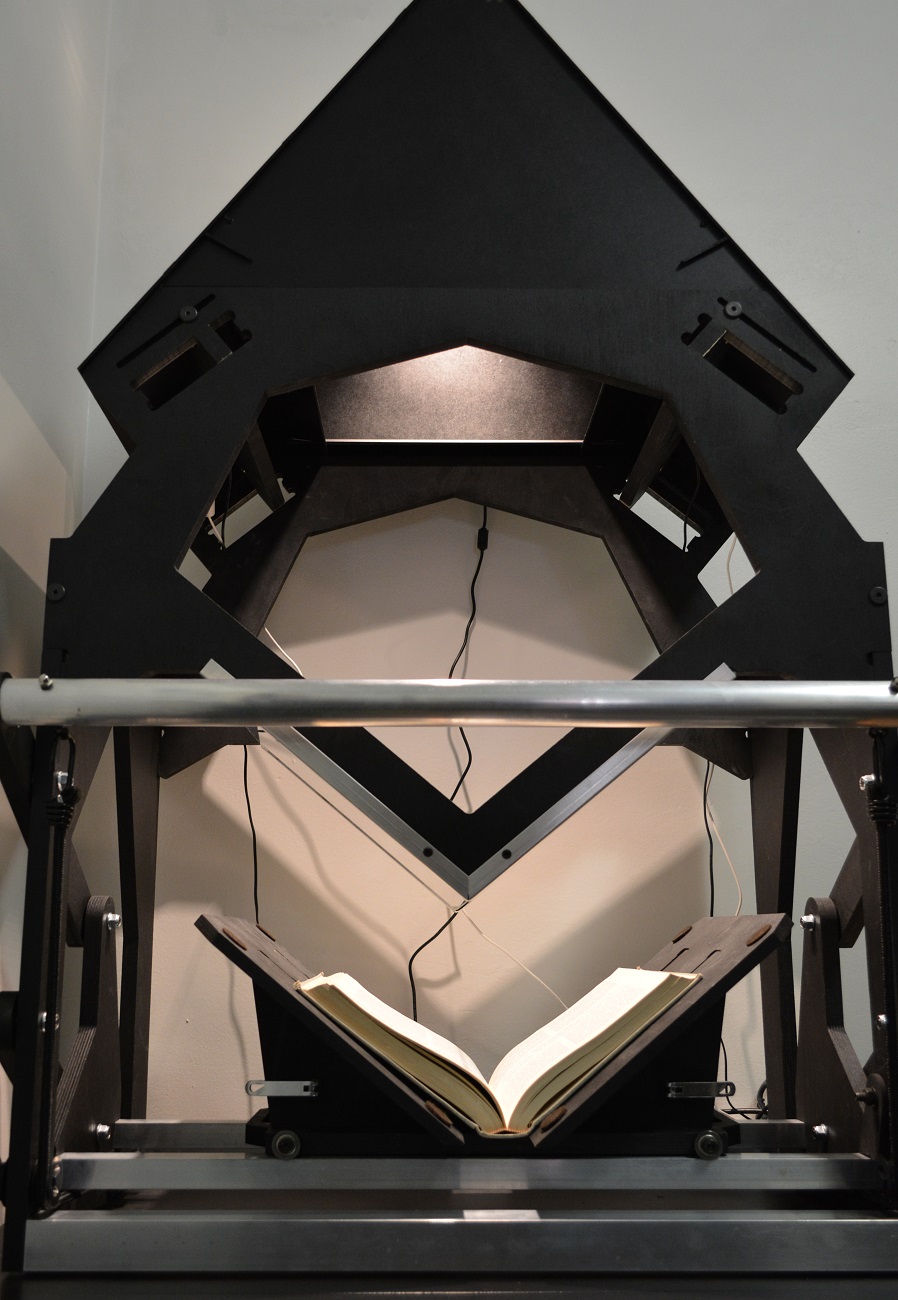At Tenrec Builders LLC, we make and distribute book scanner kits. Our goal is to help make sure that ordinary people have access to the technology to make high quality reproductions of the books they own. Whether you want to make a copy of a childhood journal, track the geneology of your family, or scan a historical document, our scanner kits will help make it happen.
DIY Book Scanning
For flat documents, or where quality doesn't really matter you can use many different techniques for scanning. A flatbed scanner, document feeder, platen-less overhead scanner, or even a cell phone can take a quick picture. But for larger scale efforts where both speed and fidelity are important, you need a better way.
Scanner Design

- Lighting Every high quality scanner must provide strong, even lighting positioned to minimize reflected glare from the book and the scanner.
- Cameras Digital cameras are getting cheaper all the time. They are now good enough to take high quality images for a book scanner. There are two cameras, positioned to face opposing pages of a book.
- Platen In order to get a good scan, the pages of the book must be flattened. The platen is a fixed piece of glass or plastic which does this. The V-shape configuration means that you can scan a book without breaking the spine.
- Book The book is sandwiched between the platen and the cradle. For each spread of pages, you trigger both cameras, turn the page, then repeat. With practice and focus, you can reach scan speeds of more than 1200 pages per hour.
- Cradle This is a V-shaped structure designed to hold the book firmly against the platen. This is done by moving the cradle up and down every time you turn a page. A counterweight is often used to cancel out the weight of the cradle and book.
Commercial book scanners can cost ten thousand dollars or more. The DIY book scanner movement is about trying to make high quality scanners at a price where they are in reach for individuals. Daniel Reetz, a founding force for the community, built his first scanner out of scrap and a couple of consumer cameras. A whole host of DIY book scanner designs of varying degrees of sophistication can be seen at diybookscanner.org.
Archivist Quill Book Scanner
The Archivist Quill Book Scanner builds upon the lessons learned from the Archivist to provide a cheaper and lighter aluminum frame design while retaining the quality and features that made the Archivist great.
We provide Archivist Quill Book Scanner kits with everything you need to build one yourself. The base kit provides a book scanning rig which you can use with any camera that has a tripod mount. The complete kit provides cameras, a Raspberry Pi 2 controller running Pi Scan, a touch screen, and everything else you need to make a standalone book scanner appliance.
Archivist Book Scanner

The Archivist Book Scanner can turn your cheap cameras into a fast and accurate scanning machine. It was designed by Daniel Reetz who spent six years refining book scanner construction until every detail was perfect. You can read his entire master plan including what parts you need, how to assemble a book scanner, and his design rationale.
Who We Are
The Tenrec Builders are Jonathon Duerig and Mandy Giles. We are based in Salt Lake City, Utah in the United States. We are passionate about books and book scanning. Our priority is to supply affordable book scanners to anyone who needs one.
If you need help with your Archivist or Archivist Quill book scanner or the store, contact us at help@tenrec.builders.
For bug reports or any other questions about us or our kits, send email to info@tenrec.builders.
For any other questions related to DIY book scanning, feel free to post on the forum or send email to diybookscanner@gmail.com.